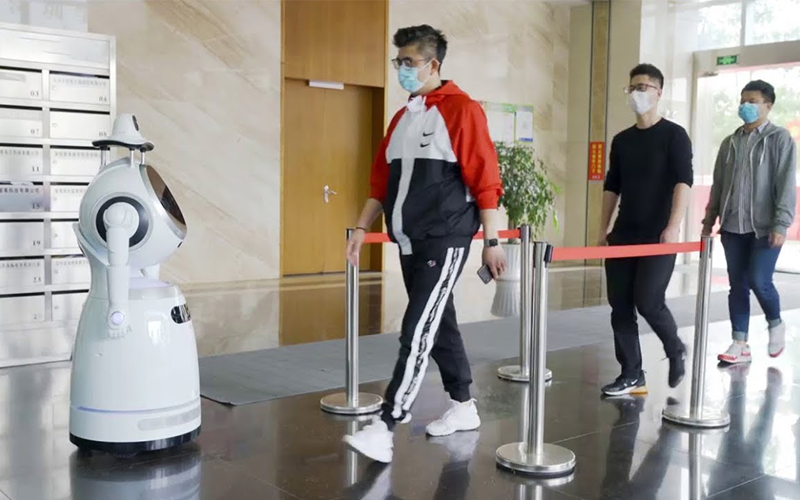 Photo by Paul Siewert on Unsplash
Photo by Paul Siewert on Unsplash
Although promising signs indicate the COVID pandemic is becoming more manageable, it's reasonable to expect the back-to-school season to look different.
When schools across the country started shutting down in-person instruction in March of 2020 in response to the COVID-19 virus, much of the nation focus turned to the impact on students.
Educators, parents, stakeholders, and policymakers still wonder if remote learning is working, how much learning loss students will suffer, how schools can mitigate the impact on students, and–perhaps most pressing of all–what back-to-school will look like in the fall.
As schools wrap up the 2020-2021 school year, researchers and executives at the nonprofit NWEA are sharing predictions about the short- and long-term educational impacts we can expect to see.
1. Back to school will not mean “back to normal”: “If we expect back-to-school to be back to normal, then we missed the mark. Nothing about the past year was typical. Each student was impacted by the pandemic differently so our approach to recovery must be as unique as them. And it can’t just be about catching kids up by cramming more into the following year or holding them back. We must focus on the critical areas of unfinished learning while also attending to the mental well-being of our kids: many of whom completely disconnected from their teachers and peers for an entire year and may just now be returning back. The arc of their education will look very different (and it must) than for students who had continued access to learning. We must also recognize that we’re still at mile one of a massive marathon. While the pandemic may be subsiding as more and more vaccines are available, the long-term impacts of this past year are yet to be fully understood. From a kindergarten bubble coming this fall to better, more equitable approaches to grading policies – our education system has and will continue to be fundamentally changed. It’s time to challenge what returning to normal means and ask, ‘What will it take to truly commit to the success of all kids?’” – Chris Minnich, CEO, NWEA
2. Grade-level grouping by age may become outdated: “As schools start their path back to in-person learning, families and teachers alike are wrestling with difficult questions about how to understand where students are now. Many families are worried their student is “too far behind” and districts are debating changes to their policies around holding students back a grade. While grouping students by grade has always been a blunt instrument, the grade a student is in means less now than perhaps ever before. This year has seen some students thrive in online or hybrid environments while others struggled. Social barriers, economic hardships, lack of computers or Internet access, and a host of other issues also impacted students differently. What does it mean to be in fifth grade if fourth grade looked different for every student? This fall is a crucial opportunity to find new ways to address individual learning, set goals that help students chart their own best path to proficiency, and find strategies for creating multi-age mastery-based groups for instruction independent of grade level. These approaches challenge many of our preconceptions about how school works – everything from daily schedules to homerooms – but this situation demands creative thinking.” – Chase Nordengren, PhD, Sr. Research Scientist, and Program Evaluation Lead, NWEA
3. Widespread COVID academic redshirting fuels “kindergarten bubble”: “Among the many ways schools are being transformed by the COVID-19 pandemic, changes in public school kindergarten enrollment is one likely to have important consequences in classrooms across the nation. Comprehensive data are just emerging, but districts across the country reported substantial drops in the number of students enrolled, especially in their kindergartens, in the 2020-2021 school year. This shift suggests a scenario in which the coming school year will see a “kindergarten bubble” as these students enter school, and in which more students enter kindergarten older. Moreover, districts may see more split-age classes, where both first grade and kindergarten cohorts could be larger, and with many more students unfamiliar with in-person classroom routines, creating a much wider range of student ages, abilities, and skills than prior kindergarten cohorts.” – Beth Tarasawa, PhD, Executive Vice President of Research, NWEA
4. Remote learning has bolstered digital literacy among educators; teachers will continue to use digital tools to enhance in-person instruction as students return to in-person: “The COVID-19 pandemic has created an unprecedented level of chaos for teachers and their students, requiring them to adopt new approaches to instruction and assessment and adapt to the uncertainty of changing parameters. Despite this, over the past year we’ve seen educators rise to the challenges of virtual learning by focusing on finding new, creative solutions to best support student learning. As a result, we’ve seen a huge shift in teachers’ mindset about using digital tools. In a recent survey by NWEA, 89% of teachers had little to no prior experience with virtual teaching going into 2020; yet nearly all teachers now expect to continue using digital tools at least some of the time when they return to more typical modes of instruction after the pandemic subsides. Looking to the 2021-22 school year, educators are anxious to get back into the classroom with their students, and will be taking this digital experience with them to further enhance teaching and learning.” – Steve Underwood, Ed.D., Professional Learning Design Manager at NWEA
5. Timely research on impacts of COVID on student learning is a priority: “In partnership with university scholars, school districts, and foundations, our researchers are continuously studying the academic impacts of COVID-19 to inform recovery policies, identify high-impact programs and innovations, and drive evidence-based decision making to advance equitable opportunities for all kids. Our latest findings suggest steady achievement in reading, unfinished learning in math, and raise concerns about missing data on students from underserved communities. However, we are just scratching the surface of the COVID-related educational impacts. Forthcoming NWEA research will continue to explore national trends in student learning during the pandemic, examine variation across subgroups (e.g., race/ethnicity, school poverty levels, urbanicity) and modality (e.g., hybrid, remote, and in-person) of instruction, among many other rapid-response research projects that tackle our most urgent questions.” – Beth Tarasawa, PhD, Executive Vice President of Research, NWEA
6. An evolution of grading systems to support more flexibility: “Last spring, many districts removed or adjusted their traditional grading systems recognizing that those systems were promoting inequitable outcomes or placing undue pressure on students during the pandemic. While some felt that this was “lowering the bar,” most of the changes we’ve seen relate more toward giving students flexibility and grace – such as adjusting grading policies to allow reassessment or extended time to demonstrate learning – rather than lowering expectations. When students return in the fall, we cannot expect that things will return to “normal” and that all of the pressures that students were under will magically disappear come September. As such, districts should take this moment to reflect on what kinds of behaviors and attitudes our grading policies have encouraged in the past; does a system like giving “A – Fs” really demonstrate learning; and how can we align them better both with research on how effective learning happens and with the types of schools we want to build. Our purpose is rarely that students learn something quickly, but that they learn it well and demonstrate a higher-level skills in that area. Research shows this type of stance – having high expectations for learning but flexibility about time and place – is what leads to genuine learning growth.” – Lindsay Prendergast, Professional Learning Consultant, NWEA
7. Accountability and assessment will be reimagined and realigned to be more relevant to teaching and learning: “The pandemic has illuminated persistent disparities in educational opportunity and outcomes while simultaneously necessitating new ways of approaching teaching, learning, assessment, and accountability. States and districts are struggling to best understand how students, educators, and schools are doing and how they can equitably apply interventions and distribute resources. The recent stimulus bill, providing $126 billion for K-12 schools, will help support much of this work, as much of it is to be focused on helping students catch up on learning they have missed during the pandemic. That’s why there has never been a more critical time to ensure that assessment and accountability systems are doing what they are supposed to – drive positive student outcomes and school improvement. As we look to next year and beyond, federal and state leaders have an opportunity to reimagine their roles and evolve beyond auditors of education systems to active supporters of improved learning. We anticipate we will see these leaders step up to support states and districts in identifying gaps in learning outcomes and growth, implementing the appropriate evidence-based interventions, and targeting resources in an equitable manner that reflects local context and need.” – Abby Javurek, Vice President, Solution Vision and Impact, NWEA
Discover more ways to have a virus-free schools with RobotLAB!



